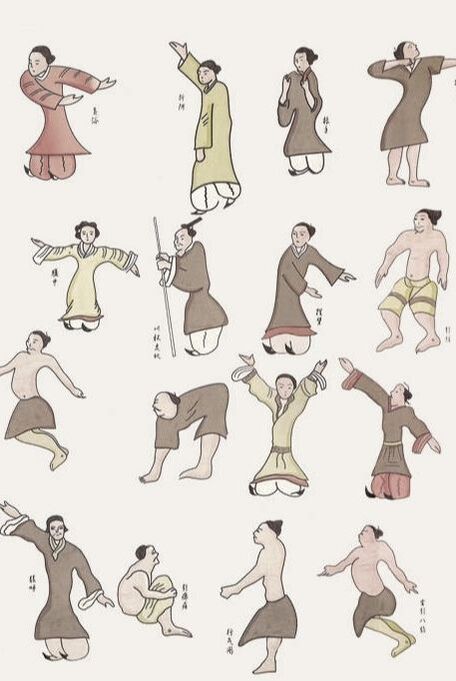Sounds of Mantra
The Heart-Breath Harmonization Song of SunDo
|
The sound of a mantra can lift a person to higher levels of self-understanding. It can bring transformation while imbuing power and strength. Mantras are repetitive and rhythmic phrases that reach deep into the core of the unconscious mind to bring wholeness to the mind, body, and spirit. We can chant mantras out loud, practice them silently in our minds, and listen to them as part of yoga or meditation practices. We’ll examine how three spiritual traditions - Hindu, Buddhist and Taoist - incorporate mantras into practices of self-development and assist us in fostering greater spiritual qualities in ourselves. How do mantras affect us? |
Mantras help us focus our attention to tune out distracting thoughts, strengthening the depth and stability of our concentration. Additionally, the repetitive vibrations in certain mantras can increase our awareness and tune us into the present, helping us find peace and wholeness throughout the totality of our being.
Chanting mantras is also a healthy and effective means of catharsis. Many of our physical and mental ills stem from repressed emotions that we unconsciously store in our bodies as a result of judgments we’re feeling. We can often become obsessed with the sensations we feel from these neglected emotions and lose touch with ourselves. Chanting brings these shadow feelings to light and allows us to emotionally move forward.
Sanskrit Mantras and the Hindu Tradition
Chanting mantras is also a healthy and effective means of catharsis. Many of our physical and mental ills stem from repressed emotions that we unconsciously store in our bodies as a result of judgments we’re feeling. We can often become obsessed with the sensations we feel from these neglected emotions and lose touch with ourselves. Chanting brings these shadow feelings to light and allows us to emotionally move forward.
Sanskrit Mantras and the Hindu Tradition
Gayatri Mantra
Om bhur bhuvah svah | tat savitur varenyam | bhargo devasya dhimahi | dhiyo yo nah prachodayat ||
Translation:
Earth, Heaven, the Whole Between.
The excellent divine power of the Sun.
May we contemplate the radiance of that god,
May this inspire our understanding.
|
The Sanskrit language is specially suited to chanting as its sounds produce powerful vibrations that, when strung together into words and phrases, bring calmness, mental acuity, and spiritual enrichment to the chanter. Sanskrit originated in Northwestern India and Pakistan and is one of the oldest languages known to mankind. It has an unmistakably beautiful and lyrical sound shaped by its unique system of pronunciation using five distinct positions of the mouth. These positions and the vibrations they create play a pivotal role in the healing and spiritually nourishing effects of the language. Gayatri Mantra is one of the oldest and most sacred Sanskrit mantras. Douglass Brooks, a professor of religion at the University of Rochester, considers the four lines an expression of gratitude to nature’s symbol of generosity, the sun, which “gives, but never receives.” It is also a declaration of the chanter’s intent to seek enlightenment. Tibetan Buddhism |
Bodhisattva of Compassion (Avalokiteshvara) Mantra
Om Mani Padme Hum
Translation:
“Behold! The jewel in the lotus!” or “Praise to the jewel in the lotus.”
According to former Principal Chant Master Ngawang Tashi any mantra in the Tibetan Buddhist tradition is “a sound, syllable, word, or group of words that is considered capable of creating transformation.'”
This theme of transformation is reflected in the most well known chant in the Tibetan Buddhist tradition — Om Mani Padme Hum. The Dalai Lama says regarding the mantra, “The six syllables, om mani padme hum, mean that in dependence on the practice of a path which is an indivisible union of method and wisdom, you can transform your impure body, speech, and mind into the pure exalted body, speech, and mind of a Buddha.”
Chanting this phrase often helps people cope with stressful situations and is used in daily prayer routines for spiritual enrichment.
SunDo Breath Meditation
This theme of transformation is reflected in the most well known chant in the Tibetan Buddhist tradition — Om Mani Padme Hum. The Dalai Lama says regarding the mantra, “The six syllables, om mani padme hum, mean that in dependence on the practice of a path which is an indivisible union of method and wisdom, you can transform your impure body, speech, and mind into the pure exalted body, speech, and mind of a Buddha.”
Chanting this phrase often helps people cope with stressful situations and is used in daily prayer routines for spiritual enrichment.
SunDo Breath Meditation
Heart-Breath Harmonization Mantra
Jung Gak Do Won
Che Ji Che Nung
Bool Do Il Hwa
Goo Hwal Chang Sang
Translation:
Awakened in the foundation of truth,
I gain wisdom and power.
When the universe and I are one,
I will save all living beings.
|
SunDo is an ancient Korean Taoist breath meditation practice that enables practitioners to accumulate Qi in the lower tancheon (lower-abdominal energy center) similar to other types of Taoist practices such as Qigong or Tai Chi. Once enough Qi has been stored in this lower center, a person’s body and mind become saturated with vital energy, which brings optimal health and increased power that can be used for augmenting any area of one’s life.
An audio recording guides the SunDo practice. The recording is a SunDo Master’s voice continually repeating the 16 words above. The mantra’s purpose is to focus attention and evenly synchronize the heartbeat with one’s inhale and exhale. Additionally, these words help to create the “right heart” for guiding oneself on the path toward enlightenment. |
Get e-newsletters five times a year with the latest SunDo blogs, upcoming retreats and more!


